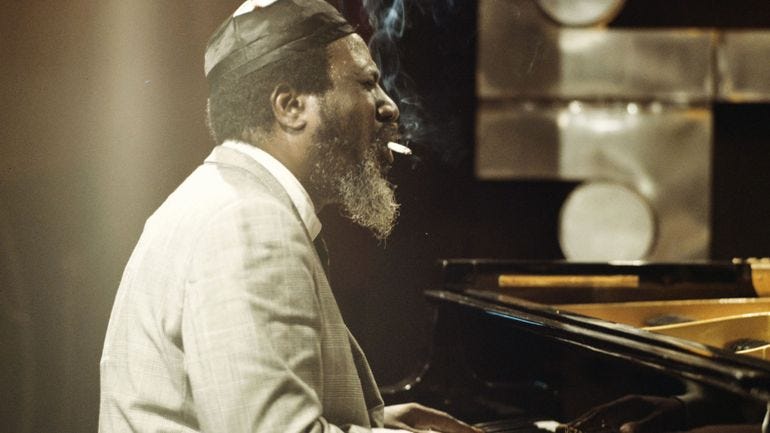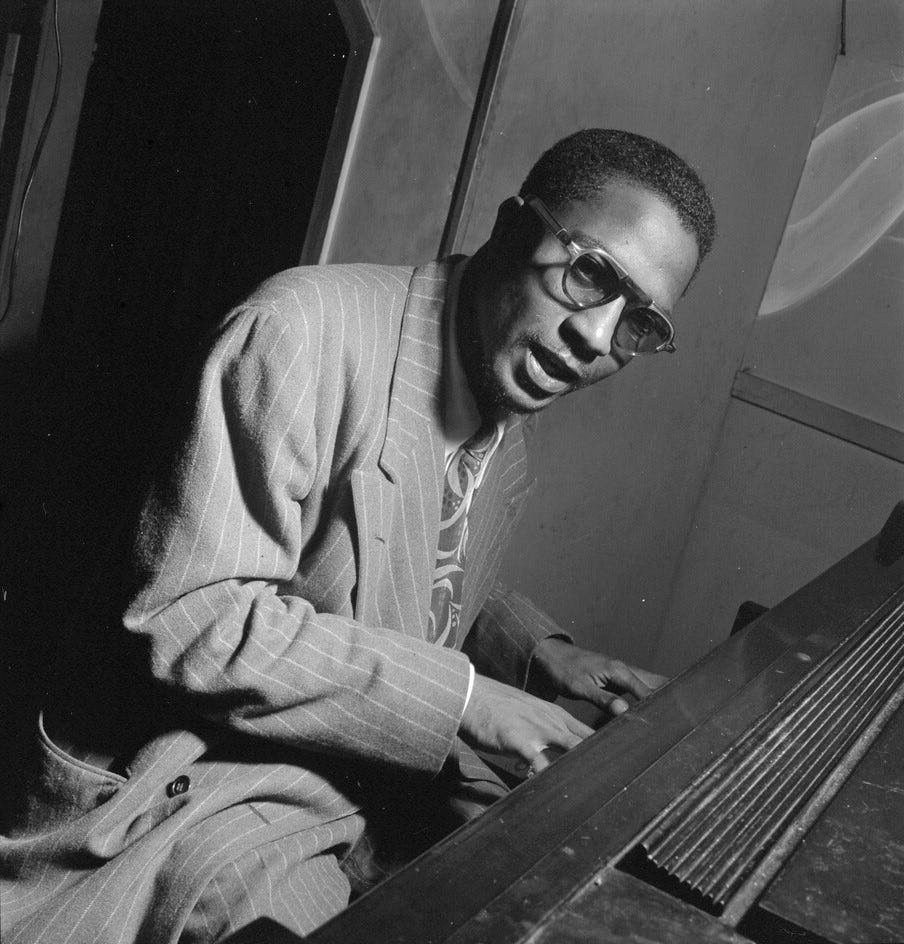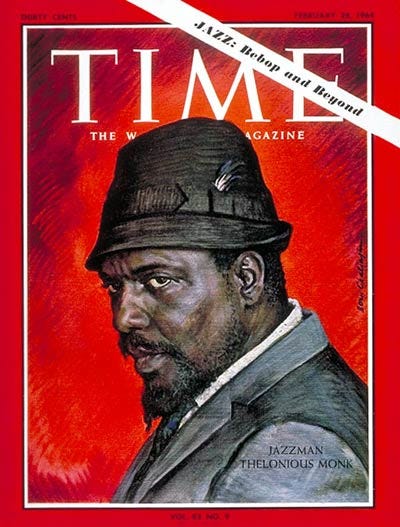
An original.
We can admire artists for their chameleon-like versatility and their ability to change with the times and to remain “current,” whatever that means. And then we have the extremely rare artists like Thelonious Monk. Artists who seemingly arrive on the scene fully formed from the moment they emerge, sharing with us a viewpoint that is wholly unique and maverick. Most artists show us how to lean in by leaning in a little further than the rest of us. Then there are the handful of artists like Monk whose singularity demands that the entire world lean into them.

Thelonious Sphere Monk was born in Rocky Mount, North Carolina, October 10, 1917. The family moved to New York City when Monk was five and started playing the piano one year later. He was largely self-taught. In his early twenties be became the house pianist for Manhattan nightclub, Mintons, and his earliest influences were Duke Ellington, James P. Johnson, and Art Tatum. However, Monk’s inventiveness was noticed from the beginning and his style and playing were instrumental in the formation of bebop.
Coleman Hawkins was an early champion and Monk’s first studio recording session was with Hawkins in October, 1944. From the very first notes of On the Bean you can hear Monk’s style fully formed.
Monk made his first recordings as a leader in 1947 for Blue Note Records and these tracks would become the album. Genius Of Modern Music Volume One. The first track is none other than one of the most iconic jazz standard ever written, ‘Round Midnight.
In the early fifties, Monk recorded for the Prestige label and made incredibly influential albums with artists including Sonny Rollins and Art Blakey.
From 1955 to 1961 Monk was with Riverside Records. While by now he was highly regarded and respected by his peers, he had yet to achieve and commercial success. His album Brilliant Corners from 1956 changed that.
Monk’s six-month residency at Manhattan’s Five Spot in 1957 marked his return to publicly performing in New York City after a six-year absence. The quartet that Monk formed featured John Coltrane and for just this half year, these two giants performed and recorded together. Coltrane would later say, “Working with Monk brought me close to a musical architect of the highest order. I learned from him in every way.”
Monk returned to the Five Spot in 1958 and while the star power of Coltrane was missing, the quartet now was very well balanced and now consisted of Monk, Johnny Griffin, Roy Haynes, Ahmed Abdul-Malik. The produced two incredible albums — Thelonious in Action and Misterioso.
One of my personal favorites is Monk as big band leader for his 1959 album, The Thelonious Monk Orchestra at Town Hall.
Another personal favorite is also from 1959, Thelonious Alone in San Francisco

From 1962 to 1970, Monk was with Columbia Records and his first album, Monk’s Dream, produced by Teo Macero and released in 1963, became the biggest selling record of his career.
And in February of 1964 he became one of just five jazz musicians to appear on the cover of Time Magazine.

Monk’s output as a composer drastically decreased during this period and the last album to have mostly original tunes is the great 1968 album, Underground.
The last recordings Monk made as a leader was in 1971 while on tour in England. He sounds extraordinary and completely at the top of his form.
For the next decade, as Monk’s health declined, he would very rarely receive any guests and stopped playing the piano, even though there was a piano in his bedroom. He died of a stroke on February 17, 1982.
One of the great documentaries made about a musician is the 1988 film, Thelonious Monk: Straight, No Chaser. However, this short one hour documentary Thelonius Monk: American Composer is quite good, too.
And here are a couple of wonderful live performances I’ve found.
